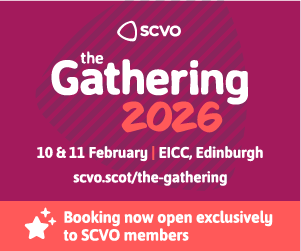As charities navigate the continuing impact of the pandemic, many face increasing overheads and tighter budgets. Spikes in wholesale gas and electricity prices have also brought the cost of energy to the forefront of everyone’s minds.
With these cash-flow concerns, charity managers must carefully consider where additional savings can be made. This can be especially challenging for smaller organisations where budgets are often already tight.
The recent COP26 summit, in which SSE was a principal partner, has brought climate change to the top of the agenda for many organisations. It also highlighted the importance of accelerating climate action to protect the most vulnerable groups in the world who tend to be disproportionately affected. So what steps can we take to meet this challenge? Carefully considering your energy use and efficiency may uncover some surprising potential savings whilst reducing your carbon impact.
Take advantage of tech
The UK government has set new obligations to ensure all organisations, including charities, have a smart meter installed by 2025 to help meet its ambitious 2050 net zero targets.
Utility Aid, the UK's largest broker for the not-for-profit sector, has worked with SSE Energy Solutions in upgrading many of their customers to smart. Sally-Ann Beaver, their Sales Director, feels that the transition has been smooth with minimal disruption to their customers. There is no additional cost to a smart installation. The engineer is usually with you for around an hour, and your power supply only needs to be switched off for a short time.
One of the major benefits of smart meters is that energy readings are sent directly to suppliers, cutting out the need for meter readings and estimated bills. Sally-Ann tells me: "Charities don't always have the luxury of lots of staff. Previously, it may have been difficult for many to take regular, accurate energy readings, resulting in incorrect billing. This smart technology ensures that any charity organisation does not need to worry about over or under estimating its energy use, and can be confident they are budgeting correctly for this each year."
You can also link your smart meter to free energy management software, such as SSE Clarity, and analyse data across a variety of time periods, from half-hourly to annually. With this insight, patterns and emerging trends can be spotted, enabling action to make savings. For example, by installing motion sensors to keep office or shop lights on only when needed, or encouraging staff and volunteers to turn off IT equipment overnight. After all, it has long been said that the greenest energy use is no energy use.
Green credentials
The voluntary sector is often deeply involved in campaigning for action on climate change, and we know that consumers and supporters increasingly believe brands bear as much responsibility as governments to drive positive social change. A commitment to keep energy use as clean and efficient as possible is a statement to customers, supporters and employees that the organisation is serious about this issue.
To find out more, go to sseenergysolutions.co.uk/smart-metering.
Kerry Maisey is Head of Smart Metering at SSE Energy Solutions






